They say the grass is always greener on the other side, but you won’t hear someone with an evergreen marketing strategy speak those words. Why fantasize about someplace better when you’ve achieved evergreen sales, and your field is flourishing and lush all year round.
How can you achieve that? By implementing evergreen design into your overall marketing strategy, of course. Evergreen design is a broad concept encompassing a variety of tools and processes.
Often it involves automation – as is the case with evergreen funnels – but topics, products and content can all be evergreen too.
The common denominator for all these different formats of evergreen marketing is adherence to two principles: sustained relevance and long-term effectiveness.
In this article, we’ll begin by taking a look at what evergreen marketing means, before going on to explore some examples of evergreen formats. The second part will be focused on evergreen sales funnels and how to build one.
In all, the topics and tools covered should give you a good idea of how to achieve evergreen sales through a variety of evergreen tools, whether they be blog posts or complex automated sales sequences.
Table of Contents
What is evergreen sales and marketing?
Evergreen marketing refers to content or tools that continue to reap benefits long after they were initially created or implemented. That is, they continue to generate traffic and conversions (or other goals they were designed for).
The key to achieving evergreen marketing is remaining relevant.
For a blog, that could mean addressing an issue that readers are likely to be experiencing for years. For a sales funnel, it means continuing to target and nurture prospects by enacting sequences triggered by user behaviour (i.e. being relevant to where they are in the customer journey).
The intention behind evergreen marketing is to do away with cyclical ups and downs in sales by creating reliable traffic streams and sources of stable revenue. In brief: to generate evergreen sales.

So for example: evergreen sales funnels do away with the unpredictability accompanying seasonal launches by creating an automated system that keeps generating leads and driving conversions for products.
Evergreen marketing is not tied to particular products. While you can have evergreen products (often tied to basic human needs like food or shelter), evergreen marketing techniques can also be used on products that wouldn’t usually be classified as such.
How to create evergreen content?
This year, 82% of companies reported utilizing content marketing, proving that it is still popular in creating brand awareness and generating interest in products. With content being so effective, it becomes all the more important for companies to integrate evergreen content across platforms if they want to achieve evergreen sales.
But how to go about it?
Like other kinds of content, evergreen content needs to be optimised for search engines; there’s no chance of it having a long-term impact if it’s not being returned in people’s searches.
Procuring organic search traffic by creating SEO content involves using techniques like keywords searches, having appropriate keyword densities, adding alt text to your images, or covering related questions that people ask on a topic.
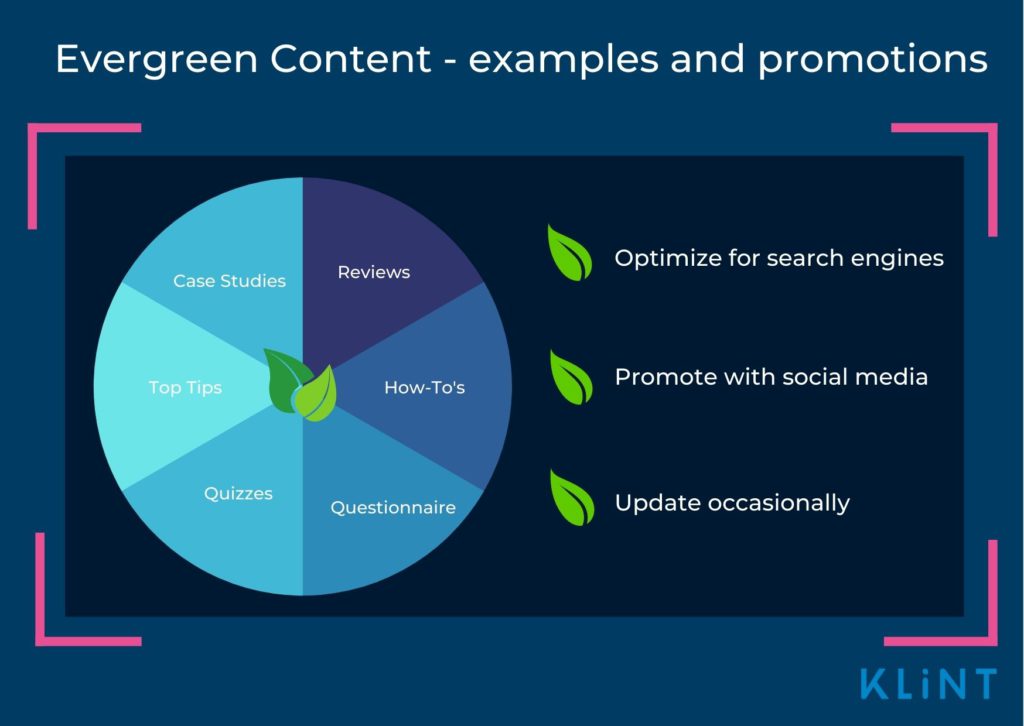
There are many tools designed to help you optimize your pages, for example the SEMrush Topic Research tool, which you can use to research topics around your product, thus gaining an understanding of what content your audience is looking for (and therefore what you should be creating to generate traffic).
Another point that may seem self-evident but is worth remembering is that evergreen content needs to be user-focused; how else can people continue finding it relevant?
For this reason, common examples of evergreen content are tutorials and tips. People love to search for advice, as the heaps of how-to articles sprawled over the web attest to. Definitions and glossaries are two other examples of informative formats that stay relevant for longer.
Meanwhile FAQs (Frequently Asked Questions) are great at ranking for long-tail keywords and helpful backlinks.
Other examples of evergreen content and design include:
- Quizzes and Questionnaires
- Case Studies
- Top Tips
- Contents Pages
- Product Reviews
One thing to remember about all evergreen promotions is that while they are usually relevant for longer, they’re not exactly timeless.
You still need to be updating your evergreen content, not just to make sure the information hasn’t become outdated, but also because updating your content keeps it active in the index and SERPs.
Popular evergreen media
How you display your content is also going to help determine whether it’s evergreen or not. For example, visual formats like infographics or video are more likely to be evergreen. Not only is visual information more memorable, it has also been found to make text more engaging and persuasive.
Videos are as popular with users as they are good for your SEO strategy (they rank higher on SERPs). 87% of marketers who use videos note increased web traffic. Given its prowess in driving traffic, video is now the primary form of media used for content marketing.

However, while video is considered an evergreen medium, for a video to be evergreen in itself it needs to focus on evergreen products or address evergreen topics. We’re back to our original evergreen promotions: tutorial videos, FAQ videos… you can fill out the rest yourself.
Another medium that is recently being recognised as evergreen are podcasts. Whether they be podcasts about marketing, social media, or hiking gear, listeners appreciate an easily digestible form of content that is simultaneously engaging and entertaining.
Promoting your evergreen content
It’s one thing to produce an evergreen product or an evergreen video, and quite another to create proper evergreen promotions.
You could have followed all our advice so far – used the right evergreen tools, made an evergreen video about an evergreen topic, or written about evergreen products using all the competitive keywords – and still your evergreen content could be lagging behind in the SERPs rankings.
In part, the nature of evergreen content itself is to blame for this. Think about it: evergreen content is content that stays relevant. If this is true, then that means that by the time you write your “How to fix your bike” blog there will be heaps of content already out there addressing the same problem.

This will make it hard for your piece to break through. By contrast, topical content will generate traffic sooner, if it’s created promptly in response to people’s spiked interest in an event or trend.
That being said, it is normal for content with an evergreen design to take time to gain traction. You can usually expect your evergreen video or other evergreen product to gradually start producing more traffic over time.
Business can’t usually wait that long, however, and so evergreen promotions for this content is something that most businesses actively do.
One strategy is building backlinks to your content. Another popular way of raising awareness of your brand or evergreen products is featuring in other people’s content – for example appearing as a guest speaker at a webinar or podcast.
You could also pay people to promote your site via affiliate marketing. This involves finding people with whom you share an audience, and giving them a commission from each sale they make.
Since we’re looking at evergreen promotions, have you ever wondered what an evergreen campaign would look like?
What is an evergreen sales funnel?
If you want a campaign directed at evergreen sales, setting up an evergreen sales funnel is the way to go about it.
Like any sales funnel, an evergreen sales funnel consists of a sequence of stages designed to convert prospects into customers. Like other sales funnels, it uses an email sequence to take prospects from the lead magnet and landing page to the final sales page.
The difference between an evergreen sales funnel and a traditional funnel lies not in automation (most sales funnels are automated), nor even in the psychological mechanisms that the funnels leverage to make conversions. Rather, the difference is in the time-span.
Traditional sales funnels are designed for a specific purpose or event, like a launch, meaning that they have an expiration date.
By contrast, the purpose of an evergreen sales funnel is precisely to do away with the reliance on launches to make sales.
Most online content creators and marketers have experienced these ups and downs: interests and sales spike in the event of a new launch, only to drop drastically in its aftermath.
Instead of tying you down to this ruthless cycle, evergreen marketing funnels offer a way of making revenue all-year-round, independent of new launches.
Evergreen funnels are scarcity-based measures: they implement scarcity in order to provoke a fear of missing out and a sense of urgency that together impel someone to make a purchase.
The scarce element is usually time, that’s why you may have heard them be called deadline funnels (because you have a deadline for making the purchase on offer).
While deadline funnel is actually the name of the most popular scarcity marketing software, there are other tools like Thrive Ultimatum or Page Expiration Robot with features enabling you to employ the principle of scarcity by attaching countdown timers to different parts to your evergreen sales funnel.

While scarcity itself is not a sustainable principle and thus can hardly be considered evergreen, the way evergreen sales operates over time can be considered an example of evergreen design.
Because an evergreen sales funnel functions independently of launches or seasonal promotional efforts, and runs on autopilot 24/7, it constitutes an example of an evergreen campaign, raising awareness of a product for long after it was launched.
Benefits of an evergreen sales funnel
Running an evergreen funnel has a number of advantages that together will give you the resources and energy you need to both improve your marketing strategy, and work on your content or product.
Easy to set-up
Because you don’t want to throw money at something that hasn’t been proven, you’re encouraged to use material that you’ve previously found to be successful to set up your evergreen sales funnel.
That’s the beauty of evergreen design: with a little adapting, you can re-use material to great effect and at a lesser expense of time!
Examples of creative reuse include: using a popular bit of content as your lead magnet, re-using previous email sequences, or using material from a past launch to make a pre -recorded webinar.
Low-maintenance
Although it’s an exaggeration to say that evergreen sales run themselves, the level of maintenance it requires is nothing compared to the workload imposed by live launches.
Much of the maintenance involves monitoring the various features of your evergreen funnels and promotions to make sure they are all still working effectively and converting. As such, these regular check-ups can in themselves be considered an advantage, which takes us to our next point:
Data collection, testing and optimization
While live launches are a one-off phenomenon, evergreen marketing campaigns are continuously running, giving you plenty of data to work with to improve your evergreen content and promotions.
As you’ll see later, most of the software you’ll be using to run your evergreen sales funnel also contains features like performance reports and tracking metrics, thus allowing you to identify the weak spots and streamline your evergreen sales.
Useful metrics to follow include cost per click, cost per registrant, as well as cost per desired action.
Tinker with your evergreen campaign using A/B testing at each stage to see what performs better and make appropriate changes to your promotions based on your results.

Evergreen sales predictability
There’s a reason evergreen sales funnels are often lauded as means of achieving passive income. You can trust your evergreen sales funnel to be running on autopilot 24/7, making your revenue stream more stable and reliable.
This is in turn gives you:
Time for content creation and thinking long-term
Now that you don’t have to be worrying about churning out those launches, you finally have the time to work on what matters to you: developing high quality content for your customers.
It’s not just about freeing up time either. Psychologically speaking, reliable income gives you the confidence you need to be creative and productive.
Finally, not having to constantly create new marketing strategies also means that you can take a step back and think about your business in the long-term.
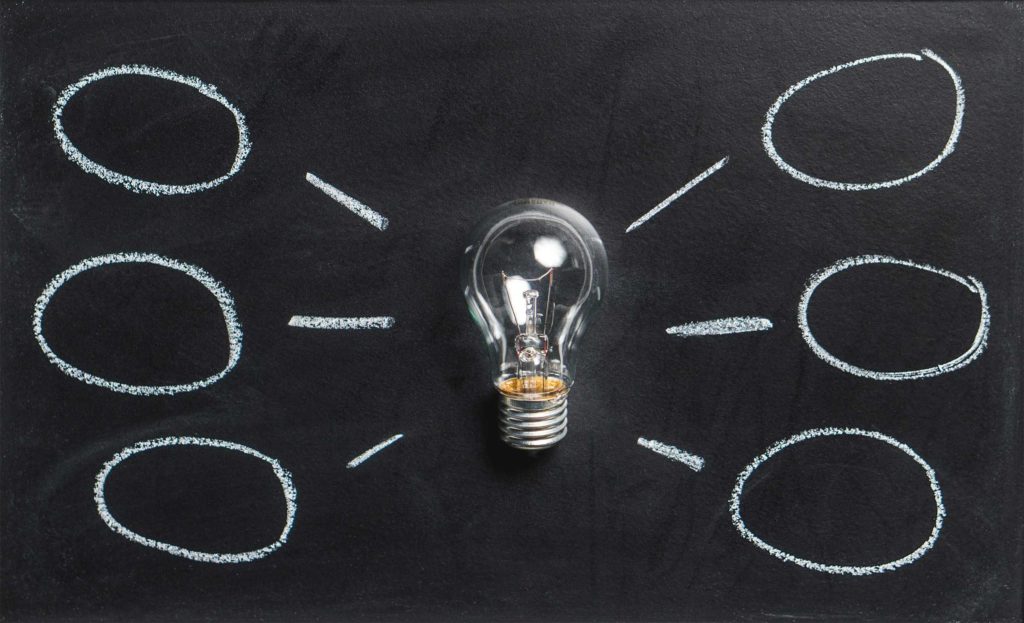
How to set up an evergreen sales funnel?
Let’s take a look now at the stages you need to include in your evergreen funnel. In a nutshell, these are:
- An ad
- A landing page
- An email nurture sequence
- A sales page
These stages each have their own particular purpose that you need to bear in mind when designing them. The end goal is a sale, but you’re not always selling.
At various stages of the funnel you will be raising awareness, sparking interest and desire by demonstrating value, as well as building trust.
1. The Advertisement
The first step in creating your evergreen sales funnel is making an ad. While all in all there are a number of ways of generating traffic for funnels, including developing partnerships and producing SEO optimized content, a form of paid advertisement like a Facebook ad is needed for a faster and more targeted outreach.
The ad is where you entice people with a lead magnet. A lead magnet is something of value that you offer prospects in exchange for their contact information.
To create something of value you have to have a good understanding of your target audience, so that you can address their needs and aspirations with your evergreen content (hopefully you will have already thought about all that when creating and validating your product!).
Luckily, there are plenty of examples of lead magnets for you to pick from: free reports, templates, quizzes or cheat sheets are only a few of them.
The bad news is that there is a danger that in giving something out for free you are attracting people who are more interested in the “for free” part than they are in your product itself.
To reduce the likelihood of attracting such people, try using a lead magnet that requires some time investment.
The logic behind this is that if someone is willing to spend the time on your lead magnet, they likely have a genuine interest in, and see the value of, your product. This makes them more likely to purchase it at the end.
In comes the webinar.
A webinar as a lead magnet
As a tried-and-tested means of producing warm leads, webinars are often suggested as lead magnets for evergreen marketing funnels.
Webinars are a great way to provide value for your potential customers and to connect with them on a deeper level. Because it’s a slightly lengthier format (some research suggests between 30 and 40 minutes is optimum) it’s an excellent opportunity to give your leads an in-depth understanding of your value proposition.
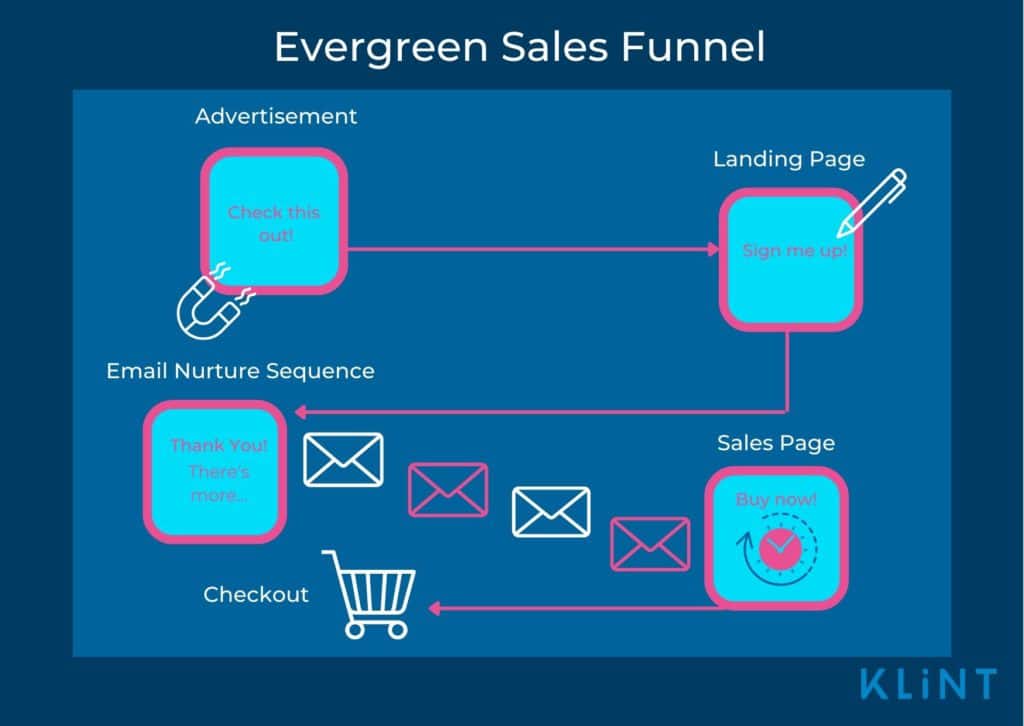
At the same time, you can use the webinar to position yourself as a leading thinker in your industry. A display of expertise is not the only way to do it; having a well-known guest speaker is likewise an excellent way of building authority.
Because it’s for use in an automated, 24/7 evergreen sales funnel, what we’re talking about here is a pre-recorded, automated webinar as opposed to a live one. As mentioned before though, you could use a previous live webinar (one you know converts) and simply alter some features, thus making your own reusable evergreen video!
There are plenty of tools to pick from when setting up your automated webinar, including: EverWebinar, Stealth Seminar, or Easy Webinar.
2. The evergreen sales landing page
After the tantalising ad comes the landing page. This is where clicking on your ad will take your lead, and where they can sign up for your lead magnet.
The purpose of the landing page is to convince viewers to perform a particular action, so make sure you stay focused on your goal – getting them to sign up.
That being said, spicing things up a little with a short explainer video could be just the thing.
One study showed that including a video on a landing page increased conversions by 86%, while research conducted in 2020 demonstrated that 96% of those surveyed showed an interest in product-dedicated explainer videos.
Studies also have something to say about how you should be writing your landing page Call To Action. The first-person voice appears to be far more effective, with one study showing thy had 90% better conversion rate than CTAs written in the second person.
So if you really want those clicks, round off your landing page message with something like “Sign me up” or “Book my webinar!” It’s going to be much more appealing than an impersonal “Sign up now!”
To create your landing page you can use a landing page builder like Leadpages, Instapage, or Get Response. Alternatively, you could create one using tools already in your arsenal; using landing pages built into email service providers like ConvertKit, for example. WordPress plugins like Thrive Theme Builder are also an option if you have a Wordpress website.
3. The email nurture sequence
After they have registered with you, the first email you’ll be sending your leads will thank them for signing up and will deliver them the lead magnet.
After that your potential customers will receive a sequence of emails intended to grow their knowledge of your evergreen products and their value, as well as their trust in your brand and its effectiveness.
The Thank You Email
If you’ve decided to go with the automated webinar as your lead magnet in your evergreen promotions, you’ll be including the details needed to attend in this email.
Bear in mind that before their selected viewing time, you can also send your prospects several reminder emails (as we’ve discussed at the start, even evergreen videos need a little promotion to be watched!)
You can think of this email as a welcome email. Welcome emails are a great way to show your appreciation for your customers and lay the foundations for a successful relationship.
As customers are expecting them (and are at a stage when they are still very excited about your brand), they have one of the highest average open rates among emails; a staggering 82%! This means that they generate 4 times as many opens and 10 times as many clicks as any other type of email.
Don’t waste this opportunity to make a good impression – your evergreen sales may depend on it!
The evergreen sales pitch
The email sequence transitions from adding value to nurturing sales. The thank you email is followed by a sequence of emails in which you start making your evergreen sales pitches.
You might think that making your sales over several emails is a bit of a drag, but customer journeys these days are only getting longer, and people will be looking to a lot more than your emails to inform their purchasing decisions.
Over 88% of online shoppers look at reviews before making a purchase. Learning to curate reviews is one way of coming to grips with this trend. Another is using the emails in your nurture sequence to directly address the motivations that drive people to search for reviews.
As people want to be hearing other user’s opinions about your product, use social proof to validate your product and inspire trust. Social proof refers to accounts or symbols that attest to the effectiveness or your product. These include user testimonials, case studies, press coverage, as well as various kinds of endorsements and awards.
One study found that user testimonials can generate up to 62% more revenue per visiting customer. Clearly, incorporating user accounts in your evergreen marketing strategy is a tactic that you can’t be missing out on!
On the Eve of the Deadline
The final email is the one that reminds your potential customers to take advantage of your offer before it expires. This is the one that really leverages people’s fear of missing out by driving home the idea that their time to take up your special offer is running out.
Some general points on writing marketing emails
One purpose of the above breakdown was to highlight the goal of each of the stages of your email campaign, and how that affects what you should be including in them.
Having said all that, you shouldn’t be forgetting about your general email marketing best practices. This deserves a blog on its own so we won’t be getting into the knitty gritty of it, but just briefly:
- Have a catchy subject line
- Personalize
- Make it easy to read
- Re-state value
- Adapt to mobile
Most of these points are a response to how we consume content these days. Since our content consumption is now distributed across a variety of media and devices, it makes good sense to make your emails mobile-friendly.
In fact, making emails mobile-friendly is the second most common tactic employed by marketers to improve their performance. The stats support this approach: MailChimp found that launching a mobile-responsive email design can increase unique mobile clicks by 15%.
And since we regularly whip out our phones in-between tasks, squeezing in glances at our email between one bus stop and the next, it likewise makes good sense to make your emails skimmable.
It’s also a good idea to re-state the value of your product at the top of each email in your sequence, as people’s hurried lifestyles and ever-decreasing attention spans make it more than likely that they won’t read all the emails in your sequence.
Evergreen sales tools
Firstly, an Email Service Provider (ESP), which is responsible for storing email addresses, tagging and segmenting contacts, and automating email sequences. One example of such a service provider is the email campaign platform ActiveCampaign.
More specifically dedicated to creating urgency, you have scarcity-marketing software like Deadline Funnel or Page Expiration Robot. These programmes let you automate email campaigns with the added option of personalized countdown timers to your sequences (among other features).
Most of these software solutions offer a variety of features, including email and webinar templates, blueprints for email sequences, and performance reports. You don’t need a tool per funnel stage – these examples are just to help you find what you like best.
4. The evergreen sales page
Finally, the time has come to sell. A high converting sales page has a number of core features, among them some – like a gripping headline, appealing design, or social proof – that we’ve already mentioned in the nurture email section.
Other core elements of your sales page will be:
An element of urgency
This is the last stage in your evergreen sales funnel, so if they haven’t begun to feel it already, this is where you need to make your potential customers feel the urgency of making a decision. One way you can do this is by including a countdown clock in the header.
You also need to have a means of making sure that your offer actually expires after the deadline, since you don’t want to be misleading customers, and in the process harming customer perception of your brand. If you’re looking to achieve evergreen sales, you need to make a good impression that lasts.
The scarcity marketing platforms mentioned earlier in the article were designed to help you with designing offers that expire at the right time.
Solid content
Apart from being well written, good sales page content will possess a number of features.
Firstly, it will be customer-focused. Focus on your potential customer by highlighting the benefits your product will be bringing them and addressing their common pain points.
Next, a good copy will include some social proof. You can address pain points and include social proof together, for example by using testimonials to showcase the successful resolution of common problems, or having them serve as answers to sales objections.
Finally, although you want to stay focused on your customer, including your bio and qualifications in your sales page is also a good idea. Saying more about yourself helps to establish a rapport between you and the potential customer, while also furthering trust.
A simple and trustworthy checkout
Although it might not seem like a big deal, the checkout process will also affect your conversion rates of your evergreen promotions. In this section you might want to include security badges to let your customers know you have a secure and verified check-out process. Examples would be Verisign or McAfee verification seals.
To create your evergreen sales page, you can use the same page builder you used to make your landing and registration pages. For the element of urgency, you have the previously mentioned scarcity marketing software.
You can collect reviews with tools like Podium, or AskNicely, while for the check out page you can use a tool like ThriveCart.
Evergreen sales – here to stay?
Although we’ve been throwing the word evergreen around a lot, don’t let this impression of plenty fool you: evergreen content in itself is not enough for any marketing strategy.
While evergreen marketing offers useful means to keep driving traffic over long periods of time (hence bringing you closer to those evergreen sales you’ve been dreaming of), you shouldn’t be thinking of your evergreen sales funnel as a closed, self-sustaining system.
Having an evergreen marketing funnel doesn’t mean that you can do away with launches entirely – they’re still a great tool for spiking interest and producing revenue bursts!
The evergreen sales funnel simply gives you the comfort of making launches when you want to make them – when you’re satisfied with the evergreen product you’ve been developing, and ready to share it with the world.
And just as evergreen funnels don’t do away with launches and seasonal promotions, so evergreen marketing doesn’t replace other kinds of marketing efforts.
While producing content that endures the test of time is a good long-term strategy, you also want to be taking advantage of the temporary bursts of engagement that come with producing topical content and keeping abreast with the trends.
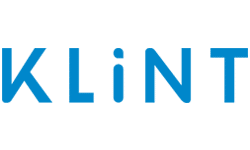
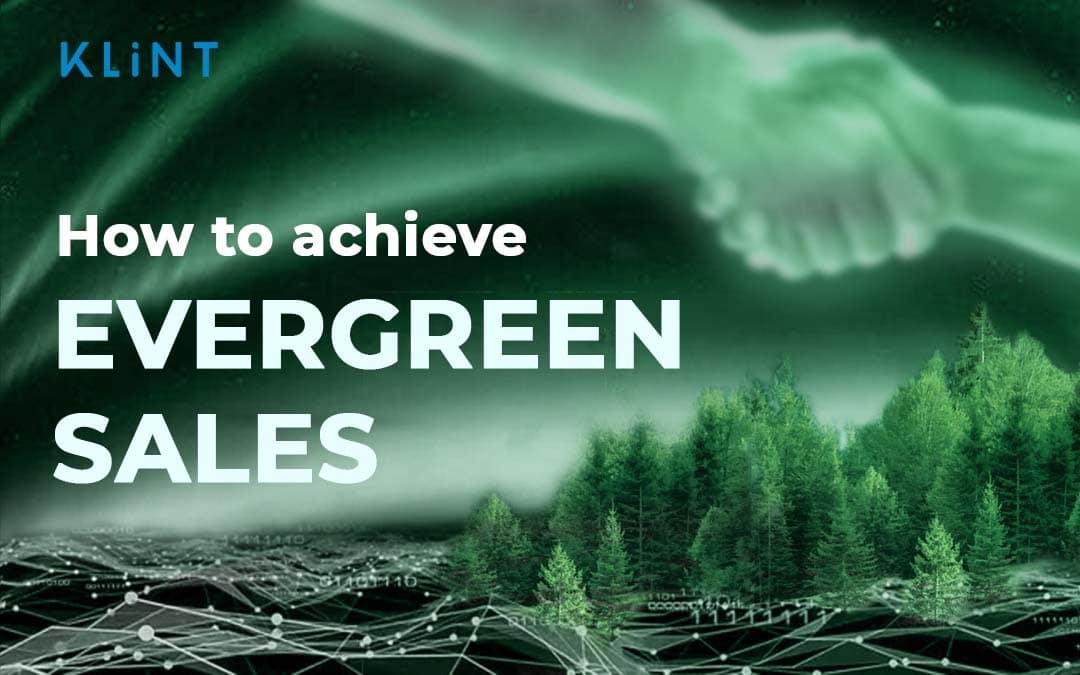
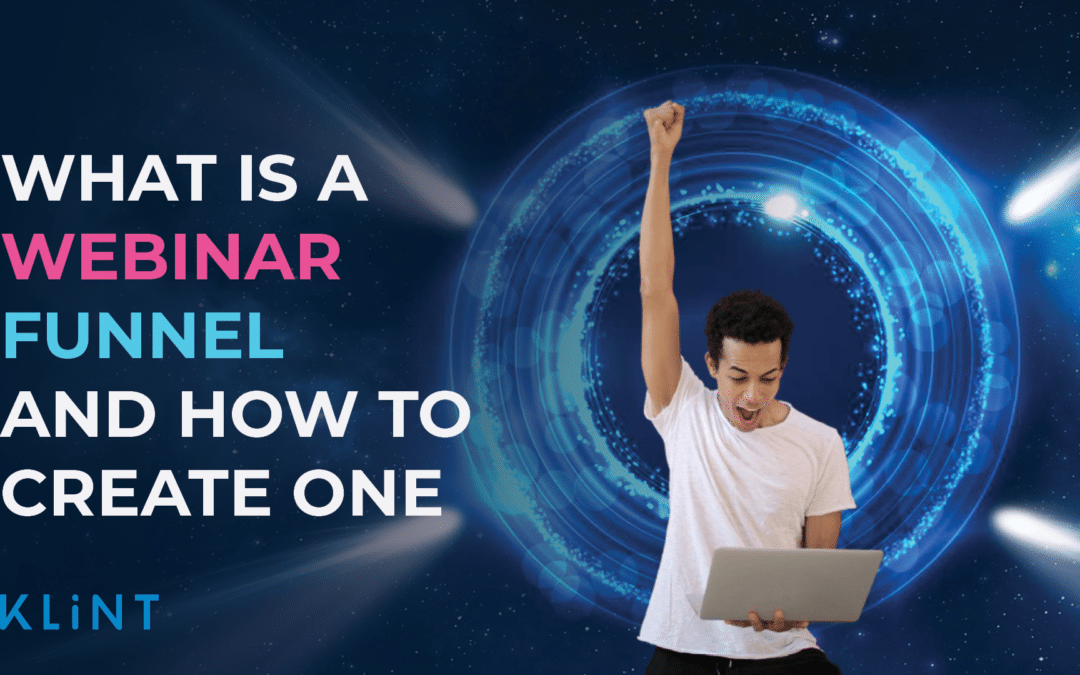
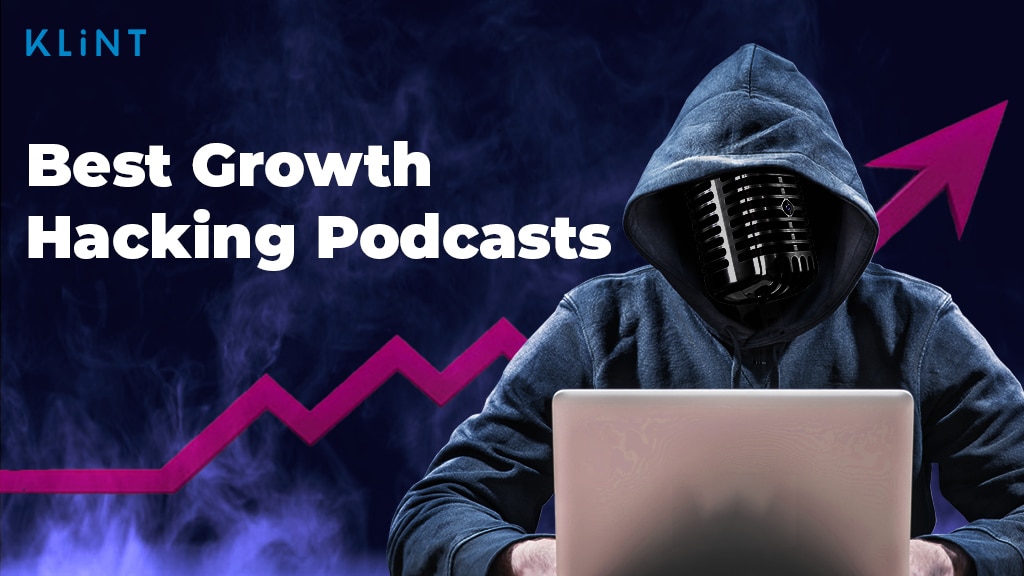

0 Comments